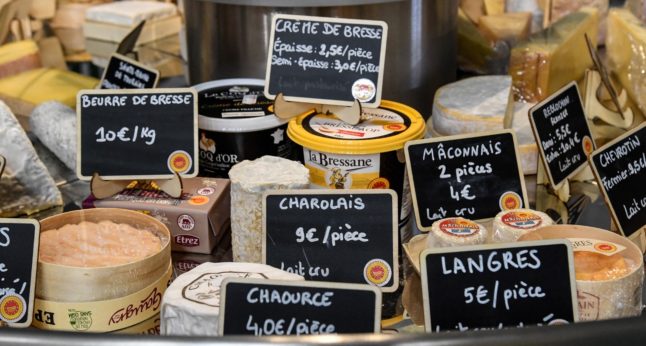From Brigitte Bardot to Inès de la Fressange, Caroline de Maigret and Léa Bonneau, the iconic parisienne (Paris woman) has been reproduced through generations of women hailed as archetypes of the French female.
“The Paris woman is the one of the most romanticised figures in the world,” said Lindsey Tramuta, journalist and author of a new book called “The New Parisienne”, published in July.
“There are very few cultural figures who have been marketed in this way,” Tramuta told The Local.
We all know this Paris woman. She is that effortlessly glamorous woman who has given advice to thousands of women on how to copy her invisible make-up, glowing skin, slender waist, perfect hair.
For decades, businesses have capitalised on her seductiveness to sell clothing, makeup and other goods – and Paris as a tourism destination.
“In an ideal world, I would be Caroline de Maigret,” begun a Vogue article interviewing the now 45-year-old fashion icon whose latest book, How to Be Parisian Wherever You Are: Love, Style, and Bad Habits, teaches women to “‘Always be fuckable’, even when you’re standing in line to buy a baguette.”
Tramuta, an American who has lived in France for over a decade and now has French nationality, found herself outraged by the way the Paris woman dominated the narrative of a city – and an entire country – that is so much more diverse.
“Paris is often pegged as a museum city resistant to change. The truth is that it is a city built on a rich cultural heritage,” she said.
In Tramuta’s book “The New Parisienne”, the multiculturalism of the capital’s women is pulled into the limelight.
Her book, which features a broad spectrum of women activists, filmmakers, authors, journalists and entrepreneurs, portrays a modern, diverse Paris, an alternative narrative to the stereotype.
“The stereotype of the Paris woman is incomplete, whitewashed .. a monolithic image of the French woman that is not true,” Tramuta said.
“Whitewashed” is notably what has spurred outrage lately among many French female activists.
The iconic Paris woman is, nearly without exception, white.
Last year, model Olivia Anakwe wrote a post on Instagram where she denounced racism and discrimination of black models, expressing fatigue that make-up artists did not know how to do her make-up or cut her Afro hair (something many French hair salons don’t know how to do either, despite roughly 20 percent of French women having Afro hair).
Franco-British journalist Alice Pfeiffer, author of the 2019 book Je Ne Suis Pas Parisienne, drew in an interview with the Guardian a line between the myth of the Paris woman and French laïcité (state secularism).
Laïcité is the ruling principle of state equality over cummunautarisme, which is a somewhat pejorative term in French that can be translated roughly to ‘identity groups’. Laïcité is supposed to ensure equal rights to everyone in France through institutional colour-blindness. In practice this means the French state does not collect any data on race, ethnicity or religion.
The French model of state secularism was thrown into question during the Black Lives Matter protests in France this spring, as activists said the French quest for colour-blindness in reality made the country blind to institutional racism.
ANALYSIS: Is France really ‘colour-blind’ or just blind to racism?
“The Parisienne says something crucial about how Paris constructs its own global identity,” Tramuta said.
The representation of the Paris woman is interconnected to the country’s ongoing debates about race and discrimination, she explained, because so many women find themselves excluded from the reigning definition of what it means to be Parisian, and, ultimately, French.
“All the women I interviewed realised at one point or another that they would never fit into the mold, even though they were born and raised here,” she said.
The book profiles famous personas such as Spanish-born mayor Anne Hidalgo, French-Moroccan author Leila Slimani, journalist Rokhaya Diallo, whose parents moved to Paris from Senegal and the Gambia, and who has been claimed the “one of the most prominent anti-racism activist in France” by the New York Times.
“Paris is one of the most multicultural cities of Europe,” Diallo told Tramuta in her book.
“There’s a whole image around the Parisienne that needs to be reconstructed because it’s been a long time since she’s looked like Brigitte Bardot or Edith Piaf,” she said.
Tramuta said it was important to broaden the definition also because foreigners often confuse Paris with France, and the two are very different.
The “new” Paris woman is not white, able-bodied, thin and straight, nor does she necessarily come from the city centre. (As Paris is becoming more and more gentrified, the lines separating the city centre from its banlieues (suburbs) are being increasingly blurred.)
“The New Parisienne” is a Romanian-born coffee roaster, a feminist podcaster, a female rabbi.
“My point is not to say we need to erase the women who do match the stereotype, I’m just saying it’s time to celebrate the other women that are here,” Tramuta said.
“The stereotype of the Paris woman is a compelling example to say lets be better about how we speak about women worldwide.”



 Please whitelist us to continue reading.
Please whitelist us to continue reading.
Member comments